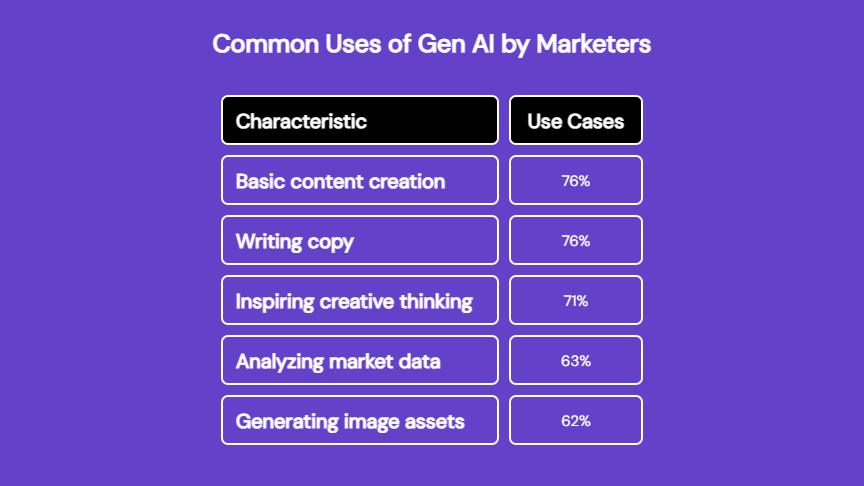What is AI-Generated Content? (and why it’s everywhere)
AI writing tools are no longer an experiment; they’re mainstream.
From breaking news to branded blogs, AI content generators are helping teams do more in less time.
So what is AI-generated content?
As you may already know, it’s any article, caption, or summary drafted with the help of a tool trained on massive amounts of language data. These tools, often called AI article writers or AI content writing tools, can produce full-length stories, edit tone, rephrase sentences, or even optimise for search.
Done right, they offer speed without sacrificing clarity. Done wrong, they read like a generic soup of stats and keywords.
AI in the Newsroom: Why sports teams are kicking the ball into AI’s court
Among all publishing sectors, AI in sports journalism is one of the most practical and widely adopted use cases. Sports newsrooms face real-time pressure: match recaps need to go live minutes after the whistle. Player stats have to be up-to-date. And every headline has to be optimised for search and social.
In the sports world, content creation AI is about survival. It helps editorial teams get the facts out quickly while reserving energy for stories that require judgment, voice, and originality.
That’s where AI shines: NOT in replacing writers, but in clearing the path for them to do better work.
Step 1: Start with an Editorial Audit
Before you introduce any AI content writing, get clear on what you’re producing. Run a quick audit of article types over the past 3–6 months. Then map them across two axes:
- Editorial Value: How much creativity or original thinking does it need?
- Time to Publish: How long does it take, from idea to going live?
Use this to identify what can be automated, what needs review, and what should stay fully human.
| Format | Editorial Value | Time to Publish | Automate? |
| Match Recaps | Medium | High | AI-first Draft |
| Player Stats Roundup | Low | High | Fully Automated |
| Transfer Rumor Tracker | Medium | Medium | Human-AI Combo |
| Feature Interviews | High | Very High | Human Only |
The idea here is to reserve human effort where it matters most.
Step 2: Create a Style Brief (Once)
Most AI content generators sound robotic because they aren’t being told how to sound.
Fix that with a one-time style brief:
- Define tone: serious, witty, fast-paced, analytical
- Share 2–3 best-performing past articles
- List sport-specific terms, abbreviations, or banned phrases
- Explain structure: intro, highlights, quotes, CTA
Upload this to any AI content writing tool and you’ve just increased your odds of getting usable output tenfold.
Step 3: Use Tools that Understand Editorial Workflows
Instead of trying to retrofit generic tools, look for ones built for publishing teams. Bridged’s Automate Pack is a good example, it includes agents that handle different parts of the process without disrupting how your team works.
Here’s how you might use it across a real sports editorial workflow:
a) Topic Discovery with the Data Explorer Agent
This AI tool identifies trending storylines, under-covered players, or high-interest matchups by analysing past performance and current search data. Great for building an editorial calendar that’s backed by real demand.
b) Drafting with the Drafter Agent
The AI article writer turns briefs into readable first drafts, complete with match details, player names, and relevant context. You still do the polishing, but you don’t have to start from scratch.
c) Optimisation with the SEO Agent
Want to rank for terms like “how to humanise AI content” or “automated sports reporting”? This agent adds SEO-friendly metadata, alt text, and headers, without forcing your writers to learn keyword research.
That’s the power of AI content creation done right: faster drafts, stronger structure, and better table positions.
Step 4: Don’t Skip the Human Touch
AI will never understand what it meant for that underdog team to win in overtime. Or why a certain transfer is emotionally charged for fans. That’s your job.
AI can handle stats and structure, but tone, empathy, and originality still come from people. That’s how you humanise AI content and turn a draft into a story worth reading. And who doesn’t love a good story?
In fact, according to this report by Harvard Business Review, “neuroscientists have shown that stories activate more areas of the brain than data alone—enhancing empathy, connection, and memory retention”.
Step 5: Scale with Guardrails
If this workflow works once, it’ll be tempting to scale immediately. Before you do, set a few guardrails:
- Define what formats are okay for full automation
- Assign human reviewers to high-stakes content
- Track time saved and publishing frequency over time
Wrapping Up
You don’t need to go all in on AI overnight. Start with one article type. Create your brief. See where the AI content writing tools help, and where they don’t.
Because when you use AI well, you’re making way for better stories.
FAQs
Q: How to write articles with AI?
A: Start with a brief, use a trusted AI content generator, and review every output before publishing. Draft with AI, finish with a human.
Q: What’s the best free AI content generator?
A: While free tools exist, most editorial teams prefer tools like Bridged that offer workflow-level integration and publishing-grade quality.
Q: How do you humanise AI content?
A: Add tone guidelines, use structure samples, and ensure a human editor reviews every piece before going live.
Q: Is AI in sports journalism really viable?
A: Yes. It’s one of the clearest use cases, where speed, accuracy, and SEO all matter. Think recaps, previews, stat roundups.
Q: How to use AI for content creation without losing quality?
A: Automate the repeatable parts (drafting, research, formatting), but keep humans in charge of story angle, tone, and final edits.




5 Comments
Thanks for sharing. I read many of your blog posts, cool, your blog is very good. https://www.binance.com/en-IN/register?ref=A80YTPZ1
Your article helped me a lot, is there any more related content? Thanks!
Can you be more specific about the content of your article? After reading it, I still have some doubts. Hope you can help me. https://www.binance.info/register?ref=IHJUI7TF
Whats good, folks? Been messing around with mwingame and its not half bad. Gives you a few good hours of entertainment. Get it here: mwingame
Can you be more specific about the content of your article? After reading it, I still have some doubts. Hope you can help me. https://www.binance.com/ph/register?ref=IU36GZC4